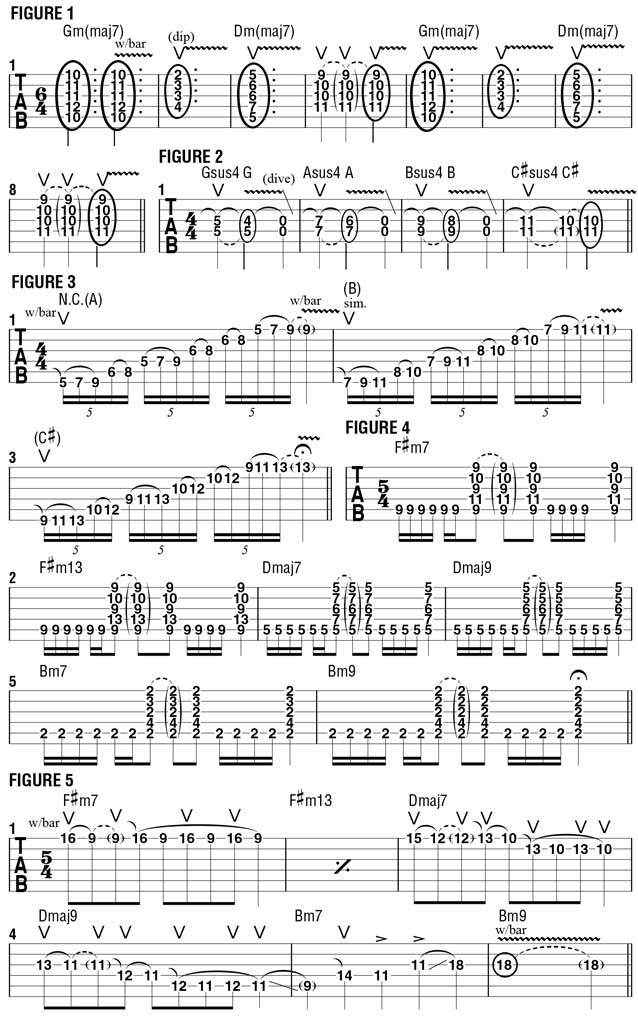Dave Davidson lesson: using your whammy bar within a riff
Use your whammy bar to “color” chord patterns and give single-note lines different and unusual textures.
This month, I’d like to demonstrate some ways in which I like to utilize my guitar’s whammy bar in the music of Revocation.
I often use the bar to “color” chord patterns and to give single-note lines different and unusual textures.
FIGURE 1 is played in 6/4 meter, and throughout this eight-bar example, a different chord or voicing is played in each bar, with the sound and attack of the chords manipulated with the whammy bar in slightly different ways. All the chords are dissonant-sounding minor major-seven chords, starting with two different voicings of Gm(maj7) in bars 1 and 2.
I begin with a root-position Gm(maj7), first striking the chord and then adding subtle bar vibrato. In bar 2, I play a third-inversion voicing that places the major seventh, F#, on the bottom. Here, I “dip” (depress and release) the bar on the downbeat of beat one and then add vibrato.
The Dm(maj7) chord in bar 3 is treated in a similar manner, and I change things up in bar 4 by dipping twice before applying vibrato. The first four bars then essentially repeat, but in bar 5 I begin with a dip and vibrato for the initial Gm(maj7) chord.
Another cool way to employ your whammy bar is to use it as an alternative means to sound a note or chord, as opposed to picking. For each measure in FIGURE 2, I begin by hammering onto two notes on the D and G strings while dipping the bar. As the notes ring, I add bar vibrato and then pull off to the open strings while “diving” with the bar, followed by another two-note hammer-on and similar treatment to each subsequent chord.
Using dipping to attack a note or chord works just as well when kicking off a single-note riff, as demonstrated in FIGURE 3. Here, I’m simply ascending through the whole-tone scale using hammer-ons only, starting on the sixth string’s fifth fret in bar 1 and then moving up two frets higher in each measure. I dip the bar while hammering onto the first note of each phrase, which creates a distinct “string attack” sound. At the end of each measure, the final note is sustained, with bar vibrato added. This technique gives the line an otherworldly character, especially when using a delay effect.
A good example of this type of whammy abuse in a Revocation song can be heard during the guitar solo in “Monolithic Ignorance,” from Great Is Our Sin. FIGURE 4 illustrates the rhythm part, which is performed in 5/4 meter. Each chord is played in the same manner, as I alternate between 16th-note root accents and sustained chords.
FIGURE 5 depicts the solo. As with the accompaniment, I adapt a consistent rhythmic concept here that adheres to each phrase in bars 1–4, beginning with a “hammer-on from nowhere” in conjunction with a whammy bar dip, and additional dips are applied at strategic rhythmic points, moving from downbeat to upbeat accents. Notes are not picked conventionally until bar 5, after which I use the bar strictly for vibrato.

Get The Pick Newsletter
All the latest guitar news, interviews, lessons, reviews, deals and more, direct to your inbox!










